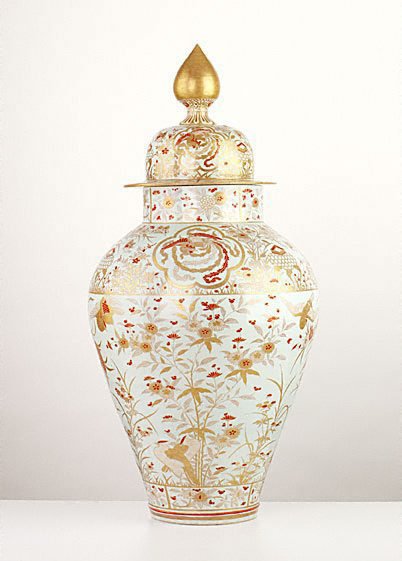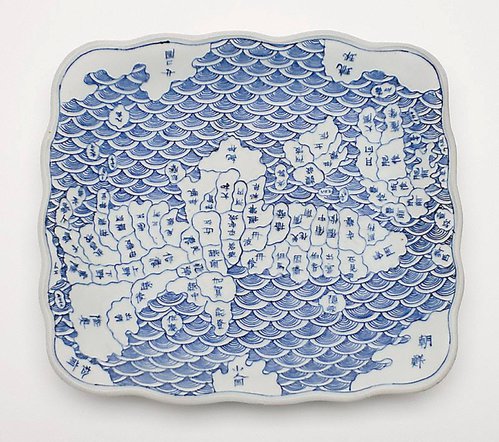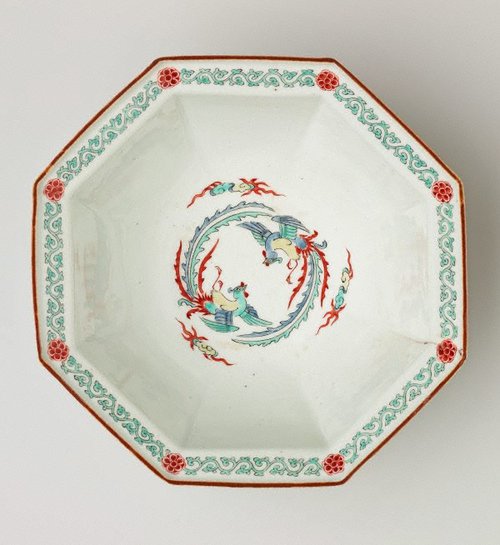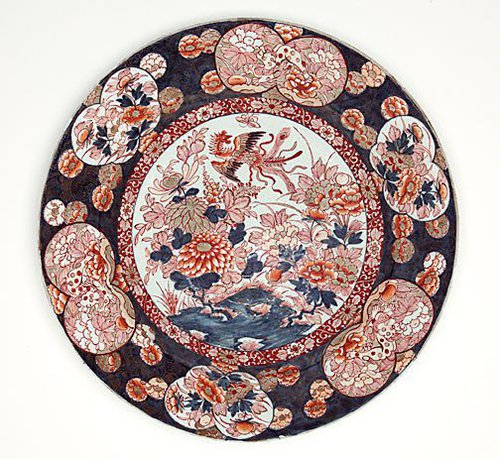-
Details
- Place where the work was made
-
Japan
- Period
- Edo (Tokugawa) period 1615 - 1868 → Japan
- Date
- late 17th century-early 18th century
- Media category
- Ceramic
- Materials used
- porcelain with underglaze blue, overglaze enamel and gold
- Dimensions
- 6.2 x 27.0 cm
- Signature & date
Not signed. Not dated.
- Credit
- D G Wilson Bequest Fund 2000
- Location
- Not on display
- Accession number
- 560.2000
- Copyright
- Artist information
-
Arita ware
Works in the collection
- Share
-
-
About
Imari ware was largely produced in the porcelain kilns around Arita and exported to other areas and overseas through the port of Imari, hence the general term for the porcelain produced in northern Kyushu. In order to distinguish those produced during the Edo period (1615-1868) from the modern/contemporary Imari ware, the former is also called 'old Imari ware (ko-Imari)'.
Production of porcelain in Japan began in the 17th century after the discovery around 1610 of the porcelain clay in Arita by some of the Korean potters brought out by the feudal lord of the region. The early designs were copies of Chinese designs in underglaze blue, but soon the overglaze enamel technique was developed around the middle of the century by a Japanese potter who learned it from the Chinese through a Chinese merchant in Nagasaki.
In 1659, the Dutch East India Company placed their first orders for porcelain from Japan. This was a result of the fall of the Ming dynasty (1644) and the subsequent establishment of the Qing dynasty, which interrupted the supply of export ceramics from China. From this time until around 1700, the increasing orders stimulated the production and development of Arita porcelain. The use of gold began during the Genroku period (1688-1704).
The shaving dish is one of the shapes specifically designed for export ceramics, and is not uncommon outside Japan. This dish is an excellent example of the type: its design is pleasantly relaxed and fresh, while in later pieces the design tends to become stiff. While the gold is mostly worn off from use, good patina has developed in its place.
Asian Art Dept.
AGNSW December 2000 -
Places
Where the work was made
Japan
-
Exhibition history
Shown in 2 exhibitions
The golden journey: Japanese art from Australian collections, Art Gallery of South Australia, Adelaide, 06 Mar 2009–13 Jun 2009
In one drop of water, Art Gallery of New South Wales, Sydney, 15 Jun 2019–21 Feb 2021
-
Bibliography
Referenced in 2 publications
-
Daniel McOwan, The golden journey: Japanese art from Australian collections, 'European export ware', pg. 240-243, South Australia, 2009, 243 (colour illus.), 330 (colour illus.).
-
Jackie Menzies (Editor), The Asian Collections Art Gallery of New South Wales, 'Ceramics', Sydney, 2003, 264 (colour illus.).
-




